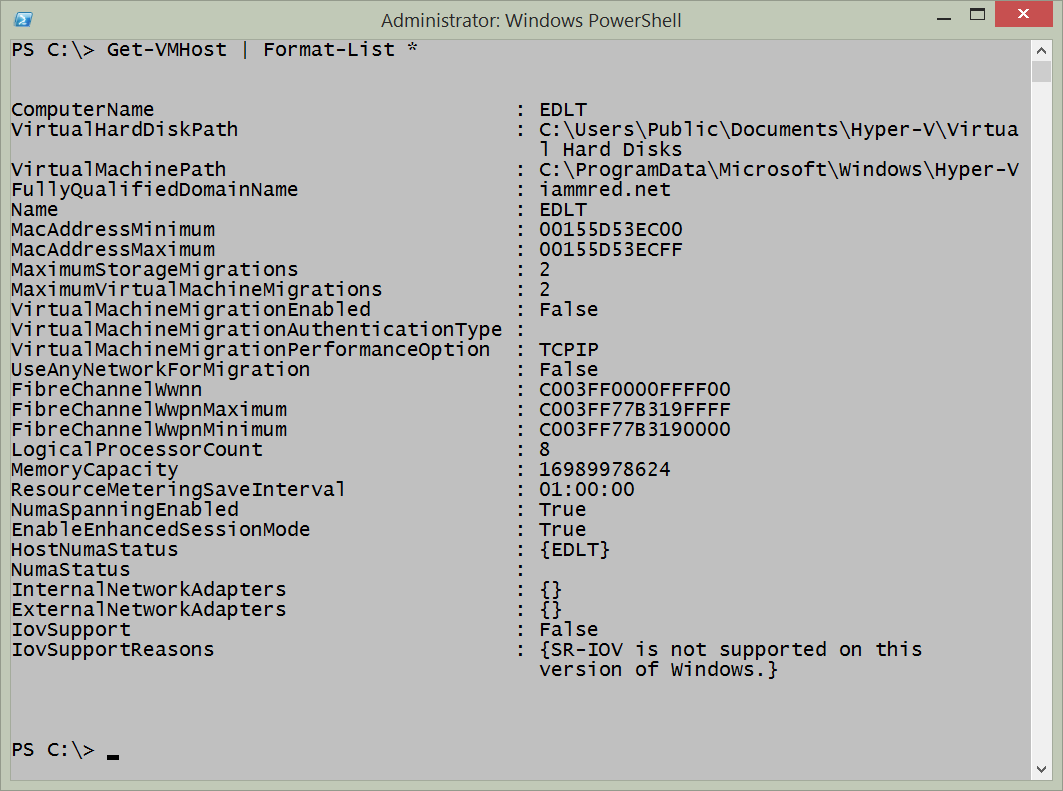
#Hyper v manager internet windows
The switch company’s installation programmatically call a Windows Management Instrumentation (WMI) application programming interface (API) that turns on the transparency, telling the Hyper-V Virtual Switch to pass and take no action on VLAN tags. The virtual switch cedes control of the VLAN to a forwarding extension. One element that is managed is virtual local area network (VLAN) IDs. A simple script program is run to reorder the extensions after updates.įorwarding extension manages VLAN ID: A major switch company is building a forwarding extension that applies all policies for networking. During maintenance, some extensions may be updated causing the order of extensions to change. Managing the order of switch extensions: An enterprise has installed extensions on their Hyper-V host to both monitor traffic and report intrusion detection. The same program also periodically logs the resources in use in addition to the per-VM resources assigned for double entry tracking or resources. The administrator programmatically tracks information such as the current usage of bandwidth assigned, and the number of virtual machine (VM)-assigned virtual machine queue (VMQ) or IOV channels. The administrator allocates resources to meet the SLAs in a manner that balances network availability. Various membership levels include different network performance levels. Resource tracking: A hosting company is selling hosting services priced according to the level of membership. The status of the switch is then displayed to give administrators a quick view of the state of the switch. The management package can query switch-wide current capabilities, configuration settings, and individual port network statistics using WMI.

Practical applicationsĭisplaying statistics: A developer at a hosted cloud vendor implements a management package that displays the current state of the Hyper-V virtual switch. The capabilities provided in the Hyper-V Virtual Switch mean that organizations have more options for enforcing tenant isolation, shaping and controlling network traffic, and employing protective measures against malicious virtual machines. In the following illustration, a Virtual Machine (VM) has a virtual NIC that is connected to the Hyper-V Virtual Switch through a switch port.

Virtual Switch Extensions that you add to the Hyper-V Virtual Switch are listed in the Virtual Switch Manager feature of Hyper-V Manager.

#Hyper v manager internet drivers
With built-in support for Network Device Interface Specification (NDIS) filter drivers and Windows Filtering Platform (WFP) callout drivers, the Hyper-V Virtual Switch enables independent software vendors (ISVs) to create extensible plug-ins (known as Virtual Switch Extensions) that can provide enhanced networking and security capabilities. The Hyper-V Virtual Switch in Windows Server® 2012 introduces several new features and enhanced capabilities for tenant isolation, traffic shaping, protection against malicious virtual machines, and simplified troubleshooting. Hyper-V Virtual Switch only supports Ethernet, and does not support any other wired local area network (LAN) technologies, such as Infiniband and Fibre Channel.


 0 kommentar(er)
0 kommentar(er)
